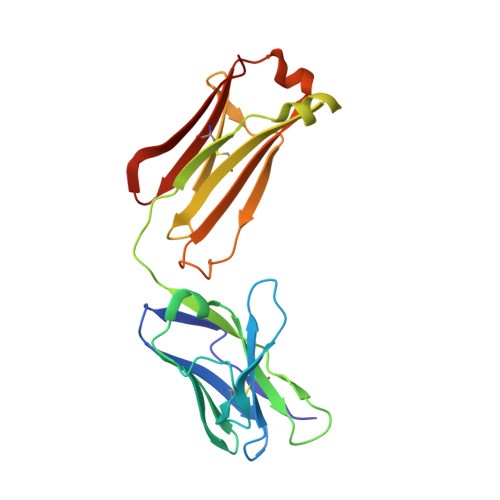Mechanism of Cd(2+) Coordination during Slow Inactivation in Potassium Channels.
Raghuraman, H., Cordero-Morales, J.F., Jogini, V., Pan, A.C., Kollewe, A., Roux, B., Perozo, E.(2012) Structure 20: 1332-1342
- PubMed: 22771214
- DOI: https://doi.org/10.1016/j.str.2012.03.027
- Primary Citation of Related Structures:
3STL, 3STZ - PubMed Abstract:
In K+ channels, rearrangements of the pore outer vestibule have been associated with C-type inactivation gating. Paradoxically, the crystal structure of Open/C-type inactivated KcsA suggests these movements to be modest in magnitude. In this study, we show that under physiological conditions, the KcsA outer vestibule undergoes relatively large dynamic rearrangements upon inactivation. External Cd2+ enhances the rate of C-type inactivation in an cysteine mutant (Y82C) via metal-bridge formation. This effect is not present in a non-inactivating mutant (E71A/Y82C). Tandem dimer and tandem tetramer constructs of equivalent cysteine mutants in KcsA and Shaker K+ channels demonstrate that these Cd2+ metal bridges are formed only between adjacent subunits. This is well supported by molecular dynamics simulations. Based on the crystal structure of Cd2+ -bound Y82C-KcsA in the closed state, together with electron paramagnetic resonance distance measurements in the KcsA outer vestibule, we suggest that subunits must dynamically come in close proximity as the channels undergo inactivation.
Organizational Affiliation:
Department of Biochemistry and Molecular Biology, The University of Chicago, Chicago, IL, USA.


















